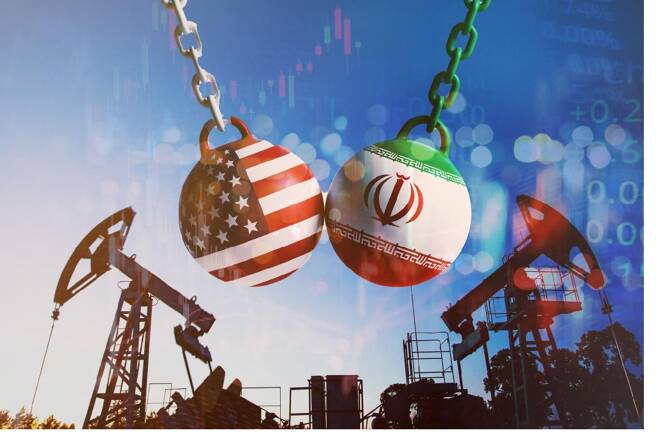Advertisement
Advertisement
US “Breaking Bread” with the Enemy?
By:
Both the US and Europe have been actively seeking alternate sources of energy, and that includes reaching out to “sworn enemies of freedom”.
The “Axis of Evil” – a term coined by former US President George W. Bush in 2002, referring to Iran, Iraq, and North Korea as countries that engaged in terrorism activities and pursued “weapons of mass destruction”. However, US-Iran relations were soured long before the (second) Bush administration. Since Iran nationalized its oil industry from the British in 1951, western intervention and Iranian retaliation seemingly drove both sides to a point of no return.
But desperate times call for desperate measures, Russian oil and gas exports are under sanction after its invasion of Ukraine. On one hand, WTI oil futures have returned to pre-invasion levels. Meanwhile, the full embargo will not take place until December – when the northern hemisphere is well into winter, a lack of fuel could be lethal to many who are deprived of heating.
Hence, both the US and Europe have been actively seeking alternate sources of energy, and that includes reaching out to “sworn enemies of freedom”. Attempts were made to reconcile with Venezuela and Iran, in order to reopen oil trading. For Iran, the latest nuclear talks have entered the final stages, if the Iranian government agrees to stringent UN inspection of its nuclear facilities, Western sanctions would be lifted. Still, decades of mistrust and conflicts leave great uncertainty about the outcome.
Oil Goliath with an Achilles heel
Nonetheless, Iran’s oil capabilities are not to be underestimated – ranking third in proven reserves globally while producing 2.5 million barrels per day, and having a refining capacity to match it. Venezuela has been revamping its refineries with Iranian assistance, indicating it can maintain or even increase its production and refining numbers.
According to Iran’s oil minister, the maximum crude oil capacity in June was 4 million barrels per day, as technical difficulties, political constraints (sanctions), and pricing considerations kept Iran from pumping as much oil as it can. A domestic-oriented energy economy also eliminates the urgency to meet export demands, though a quarter of its oil (< 1 million barrels) is shipped to non-Western destinations like China and Malaysia.
Ironically, Iran is not without its energy problems, the domestic thermal power plants and outdated electricity infrastructures are woefully inefficient, hydroelectric dams were halted by droughts, and the lone nuclear plant in the country is barely functional. As a result, various regions in Iran suffered from intermittent power outages, with people voicing their frustrations on the streets.
Deal or no deal?
Strategic and political considerations are the main proponents for developing Iran’s nuclear sector, the electricity generated by the said nuclear plant barely accounts for 1% of its energy consumption. So Iran’s power outages would not be significantly aggravated by taking out its nuclear facilities.
Since the US left the Joint Comprehensive Plan of Action (JCPOA) in 2018, Iran has been conducting talks with China, France, Germany, Russia, and the UK. The latest finalized terms have been presented to the Islamic republic, awaiting its reply. The Iranian government expects the West to lift its sanctions permanently, as western countries want Iran to limit its nuclear capability, rid of the rise of another nuclear nation.
Fortunately, public opinion from both sides has swung in favor of striking a deal. Weary of inflation and economic hardships, most Iranians today did not experience most of the US-Iran conflict, nor do they share the antagonism towards the US as their leaders. Still, the US can be one administration change away from pulling out of JCPOA as they did in 2018.
All things aside, assuming Iran signed the agreement, it would require months for the US legislative system to officially lift the sanctions, let alone for Iran to allow nuclear inspections and other procedures to reassure the West. In the short term, Iran would not bring major volatility to the oil market. Check the latest crude oil price here.
About the Author
Lucia Hancontributor
Lucia has graduated from Lincoln University in 2018, then she became an equity research associate at Renner Capital Partners which is a long-short equity fund in Dallas.
Advertisement
